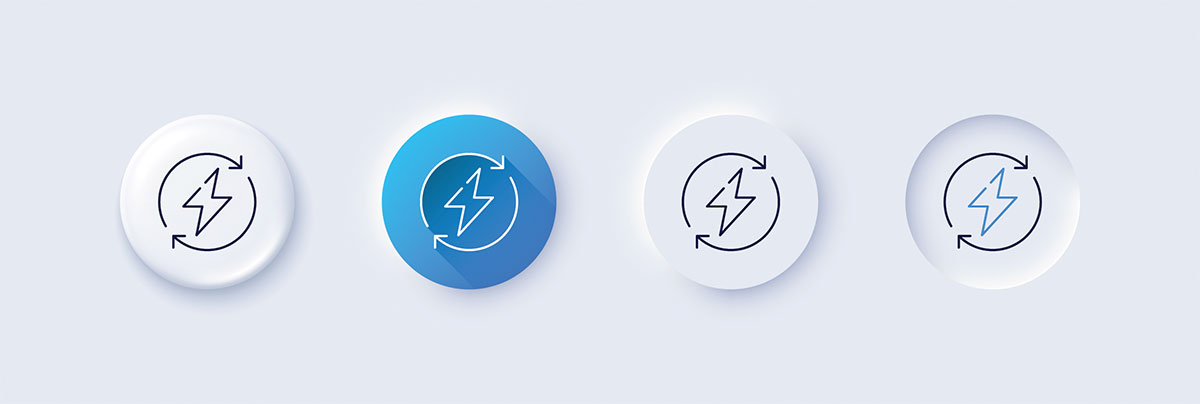The National Electrical Code (NEC), sponsored by the National Fire Protection Association, is the most widely adopted code in the world. It is also, in all probability, the most widely misinterpreted code in the world. The NEC is adopted by federal, state, and local governments as well as by private industry. As far as NFPA is concerned, the NEC is purely advisory. It becomes enforceable as law only upon adoption by an agency having authority to enforce its rules. Requirements for electrical inspection of installations, licensing of electrical contractors and electricians, as well as qualifications of electrical inspectors usually are contained in laws or ordinances that are associated with adoption and enforcement of electrical codes.
Scope of the Code
Article 90 serves as an introduction to the NEC and provides a scope to specify the electrical installations that are covered and those that are not covered. The Code covers installations and removal of electrical conductors and electrical equipment within or on public and private buildings or other structures, including mobile homes, recreational vehicles, and floating buildings; and other premise wiring such as yards, carnival, parking, and other lots, and industrial substations. The Code also covers installations of electrical conductors and electrical equipment that connect to the supply of electricity, installations of other outside conductors and equipment on the premises, as well as installations of signaling and communications conductors and equipment and optical fiber cable.
In addition, the Code covers installations in buildings used by the electric utility, such as office buildings, warehouses, garages, machine shops and recreational buildings that are not an integral part of a generating plant, substation or control center. The Code also covers installations supplying shore power to ships and watercraft in marinas and boatyards, including monitoring of leakage current, as well as installations used to export electric power from vehicles to premises wiring or for bidirectional current flow.
The Code does not cover installations in ships, watercraft other than floating buildings, railway rolling stock, aircraft, or automotive vehicles, other than mobile homes and recreational vehicles.
It also does not cover installations in underground mines, self-propelled mobile surface mining machinery and its attendant electrical trailing cable, installations of railway conductors, or installations of communications equipment under the exclusive control of the communications utility. This latter requirement generally applies to overhead and underground communications conductors from the source to their termination in a locked room under the exclusive control of the communications utility. Installations, such as telephone distribution conductors, in hung ceilings or other accessible locations, are not normally under the exclusive control of the telephone company and are, therefore, covered by Articles 800 and 805. Electric utility generation, transmission, transformation, energy storage, and distribution conductors are not normally covered by the NEC.
Enforcement
It is intended that the authority having jurisdiction interpret the rules in the Code and approve all electrical devices, materials, equipment, and conductors.
While the code is primarily intended to apply to new construction, the permits the authority having jurisdiction to use his or her judgment in also applying the code to rewiring in old installations.
By special permission, the authority having jurisdiction may waive specific requirements in this code or permit alternative methods where it is assured that equivalent objectives can be achieved by establishing and maintaining effective safety.
In discharging the responsibilities granted in 90.4, authorities having jurisdiction should enforce the requirements of 110.3(B) to assure that equipment is used as intended by the manufacturers and electrical products testing laboratories.
All mandatory rules are characterized by the use of the word “shall.” Where the word “may” is used it means that the authority having jurisdiction has the prerogative of granting permission.
This should not be confused with the permissive term “may,” which has largely been replaced in current editions of the code by the term “shall be permitted or shall not be required.”
Brackets containing section references to another NFPA document are for informational purposes only and are provided as a guide to indicate the source of the extracted text. These bracketed references immediately follow the extracted text.
Informational notes are sometimes mistakenly enforced as mandatory requirements. They are intended to provide information or explanatory material and are not intended to be enforced as a part of the requirements. Where more than one Informational Note follows a section, the Informational Notes are numbered consecutively such as Informational Note No. 1, Informational Note No. 2, etc.
Use the Table of Contents and Index
To save time, one should use the table of contents to his or her best advantage. The table of contents, lists in numerical sequence, the subjects covered by each chapter, and each article. A review of the table of contents gives an excellent overview of where the NEC covers specific subjects or equipment.
Until one is familiar with the NEC to the extent that location of specific requirements is committed to memory, use of the index is the best way to find information. The index contains, in alphabetical order, a list of what is in the Code, indicating where to find topics covered. In some cases, the location of topics can be found in more than one way. For instance, “ampacities for conductors” can be found under the heading “Ampacities” and also under the heading “Conductors.”
Seemingly vague requirements can often become crystal clear by making use of the definitions in Article 100 of the NEC. For instance, the definition of overload says that a fault, such as a short circuit or ground fault, is not an overload.
Code Arrangement
The arrangement of the Code is explained in 90.3. One should become thoroughly familiar with this arrangement for proper application of code rules. General rules in early chapters are sometimes supplemented or modified by later chapters.
Chapter Arrangement
Most articles have a scope that explains what is covered by that article. Mistakes in understanding and application of Code requirements are often avoided by reviewing the article scope before assuming general coverage of a requirement.
Chapter 8 covers communication systems and is not subject to the requirements of Chapters 1 through 7, except where the requirements are specifically referenced in Chapter 8. For example, refer to 800.44(A)(3), Climbing Space. “The climbing space through communications wires and cables shall comply with the requirements of 225.14(D).” Without a reference like this, there would not be any requirements for climbing space relative to communications conductors, unless specifically included in Article 800 and Chapter 8.
Numbering System
Essential to the understanding of any standard is familiarizing oneself with the arrangement and numbering systems employed. The numbering system utilized for the NEC consists of the introduction in Article 90, along with chapters numbered from 1 through 9. Chapters are further divided into numerous articles consisting of numbers in whole numbers of hundreds such as Article 100, Article 200, Article 300, etc. All articles in Chapter 1 begin with 100 and 110, Chapter 2 with 200, etc.
Some articles have several parts, which are in roman numerical sequence, such as I, II, III, IV, etc. Common requirements are grouped in parts of the articles. Part I, General, usually contains provisions that apply to all the other parts of the article. Other parts contain provisions that are independent of all other parts; except Part I General. For instance, Part II of Article 680 contains provisions for permanently installed pools, and Part III contains provisions for storable pools. Each part is separate and independent of the other, but all parts must comply with the applicable general requirements of Part I of Article 680; unless specifically stated otherwise.
Articles are divided into sections, such as 110.3, 110.5, 110.8, 110.26, etc. Subdivisions are further numbered with upper case alphabetical characters similar to 110.26(A), 110.26(B), 110.26(C). In some cases, paragraphs following subdivisions are numbered similar to 110.27(A)(1), 110.27(A)(2), 110.27(A)(3), etc. In all cases, the numbering system only goes down three major levels.
Parallel Numbering
The NEC-2002 introduced a new parallel numbering system, such as found in Chapter 3 articles. Common types of rules or information are assigned the same numbered section in each article. As an example, article scopes are designed as “.1.” Definitions in the 2023 NEC have been moved to Article 100; prior editions had them assigned as “.2”. Uses permitted are “.10” in all articles and uses not permitted are “.12.” This helps users of the Code locate the common section material without having to search for it in different locations and different numbers within each article.
General Requirements
Users of the NEC often miss important requirements by failing to review the general requirements at the beginning of the article or the beginning of a major part of the article before deciding that the subject is not covered in the article or part. Article 110 contains general requirements for electrical installations that are applied throughout all the other articles, unless modified by other articles.
Article 300 provides the general requirements for wiring methods and materials at the beginning of Chapter 3 similar to Article 110 but applies to all wiring methods in Chapter 3, unless modified by a specific article within Chapter 3. Remember that, in accordance with 90.3, the general requirements of Chapters 1 (One) through 3 (three) can be modified by other articles in Chapters 5 (Five), 6 (Six) or 7 (Seven).
Only those sections of Article 300 that are referenced in Articles 725, 760, 770, 800, 805, 810, 820, 830, and 840, apply in these articles. The sections of Article 300 that apply to those later articles can be found under “Other Articles” which is typically in “.3” of the respective article. This is due to the unique nature of the requirements in the referenced articles.
For more training and information on how to use the National Electrical Code, purchase the IAEI Study Guides at iaei.org.
NFPA 70, National Electrical Code (NEC) language. Copyright © 2022, National Fire Protection Association (NFPA). All rights reserved.
This text was extracted from the Electrical General Study Guide, published by the International Association of Electrical Inspectors. Purchase the 2020 NEC or 2017 NEC versions online at: https://www.iaei.org/page/examprep.











Find Us on Socials